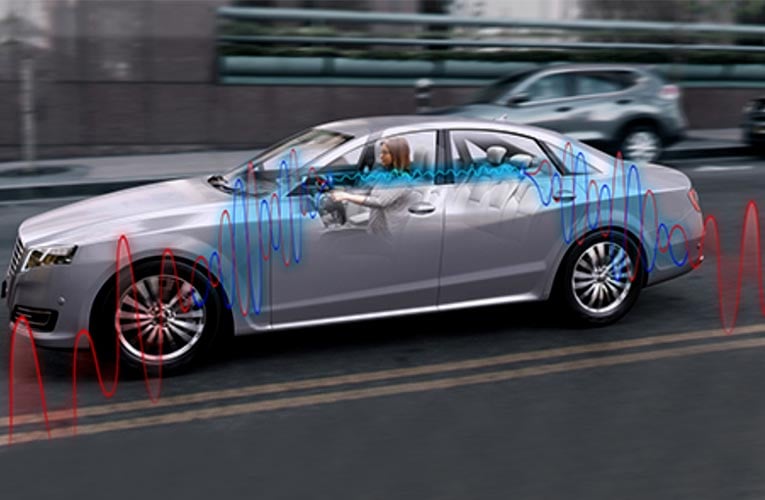
Global connectivity and electronics solutions provider, Molex has created a family of Noise Cancellation Sensors with A2B technology that when paired with sensing elements capture sound waves leads to the reduction of road-based noise produced by the combustion engine. The new Noise Cancellation Sensors can combat unwanted road, wind, and HVAC car noise while reducing low-frequency sounds that increase driver fatigue.
The Molex ANC sensors can be installed on a car chassis, thereby delivering accurate and efficient results. These sensors capture sound and vibration energy from the wheels through the suspension into the chassis for optimal cancellation timing, at a lower cost than other noise cancellation systems. The ANC accelerometers and microphone sensors use Analog Devices’ Automotive Audio Bus (A2B) technology to ensure delivery of high-fidelity audio while significantly reducing cabling complexity, costs, and weight.
Paired with the A2B network, these sensors transmit noise signals to the processing unit in less than two milliseconds. The sensors include integral connectors and are daisy-chained to simplify integration while providing up to a 30% reduction in cable weight. Molex has also tested and validated the use of its RNC sensor with Silentium’s “Active Acoustics” software, which removes up to 90% of unwanted noises across a broadband of frequencies (from 20Hz to 1kHz) to improve driver and occupant comfort, safety, and wellbeing.
The sensors are available in different housings, including an IP6K9K enclosure, to ensure greater protection from harsh conditions while enabling placement closest to the road noise. The A2B technology also allows a higher number of signals per chain to be processed. Unlike other products available in the market, Molex sensors are sensitive enough to measure and cancel road noise at slower vehicle speeds, giving designers greater flexibility in sensor placement while simplifying engineering.

